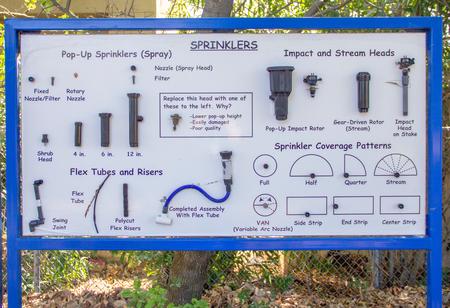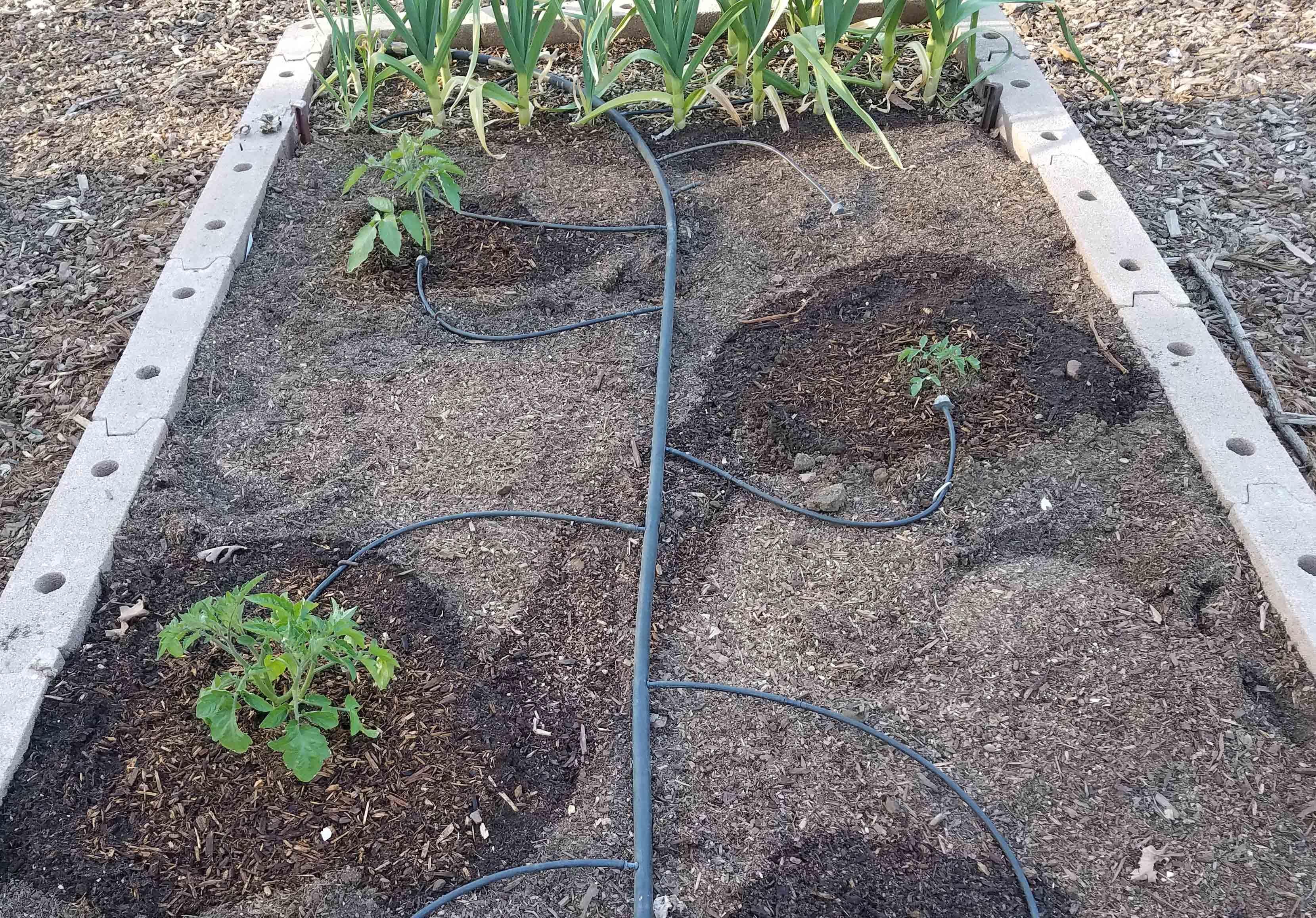Irrigation

During years of normal rainfall, winter rains in most areas usually wet the soil to about 1 foot or more deep by spring. If the soil is not wet to this depth, irrigate before seeding or transplanting so that the soil is wet to a depth of several feet. Irrigation, as it applies to home vegetable gardens, is presented here in a very brief format.
Avoid creating wide fluctuation in soil moisture content
Fluctuations in soil moisture are particularly injurious to tomatoes, peppers, and other fruits. Fruit cracking of tomatoes often occurs when uneven amounts of water are supplied during fruit expansion. Also, knobs on potatoes result from moisture fluctuations. Most vegetable crops produce poor yields and smaller produce if root systems are allowed to become too dry between irrigations.
As a rule, it is necessary to irrigate your vegetable garden one to three times a week in summer and once or twice per week or less in other seasons. The frequency is determined by the depth of crop roots, soil texture, and weather conditions. Wet the soil to just beyond the bottom of the root system at each watering. If you only keep the surface of the soil moist, most of the water evaporates into the air.
Adjust the amount and frequency of irrigation according to the water use and root depth of each type of vegetable you grow, if possible. When this is not feasible, adjust irrigation to meet the needs of shallow-rooted crops. If their needs are met, the medium and deep-rooted crops will get enough water. This same rule applies anywhere topsoil is shallow—only 1 to 2 feet of soil is available for root growth, such as in raised beds and many urban properties.
Under ideal soil conditions, shallow-rooted crops have main root systems in the top 6 to 12 inches of soil. Examples are: cabbage, cauliflower, lettuce, celery, sweet corn, onion, white potato, and radish. Moderately deep-rooted crops are those with the main root system in the top 1 to 2 feet of soil. Examples are: snap bean, carrot, cucumber, eggplant, peas, pepper, and summer squash. For deep-rooted crops, the main root system is in the top 2 to 4 feet of soil. Examples are: asparagus, globe artichoke, cantaloupe, pumpkin, tomato, and watermelon.

How much water do I give my garden?
There are simple ways to measure how much water you give your garden:
- Garden hose
If you use a garden hose, turn it on to the force you commonly use and time it to find out how many minutes it takes to fill a 1-gallon can. This gives you the rate of water flow per minute. One gallon of water adds 1.6 inches of water when applied to 1 square foot of soil; the depth of soil wetted depends on the soil texture and moisture content at the time water is applied. - Sprinkler system
Place some empty cans under the sprinkler spray at various spots. Keep track of the length of time the sprinklers are on, then measure the depth of the water in the cans when you turn off the water. Average the various depths to determine how much water is being applied to the garden at each sprinkling. - Furrow irrigation
Unlike sprinklers, furrow irrigation has the advantage of not wetting the leaves. Water on plant foliage sometimes increases the incidence of plant diseases. If you plan to use furrow irrigation, use raised beds that are 5 or 6 inches high and 32 to 40 inches apart from center to center. Rake the tops of the beds flat and make them 18 to 24 inches wide. Locate the seed rows about 3 inches from each edge of the flattened bed top. Raised beds are also good for winter crops because they allow excess rainwater to drain off. Apply irrigation water in furrows placed between the beds. If you use the furrow irrigation method, you will need to apply more water to wet the soil to the necessary depth than if you use sprinklers or drip irrigation. - Drip irrigation
Drip irrigation offers several advantages to home gardeners: Water is placed more accurately in the root zone; water is applied at a slow rate, so there is little or no waste; aisles or furrows are dry, so you can work in the garden while irrigation is in process; plant foliage is not wetted; less water is required; and little or no management is required while irrigating. The disadvantages are the added costs of the drip irrigation equipment and occasional problems of plugging of the tiny drip orifices. However, the advantages generally outweigh the disadvantages, and a drip irrigation system, when correctly installed and maintained, can be very helpful to the serious gardener. The emitters in a drip system have a flow rating, such as 1 gallon per hour, and summing the number of emitters will give you the gallons applied to the planted areas. This value can be used as in the sprinkler irrigation discussion above to estimate watering depth. - Soaker hoses
Soaker hoses are a form of drip irrigation and can be used to advantage if rows are short (20 to 25 ft) and the soil is level. For longer rows or on sloping soil, soaker hoses cannot be expected to provide as uniform an irrigation as that provided by a true drip system.
